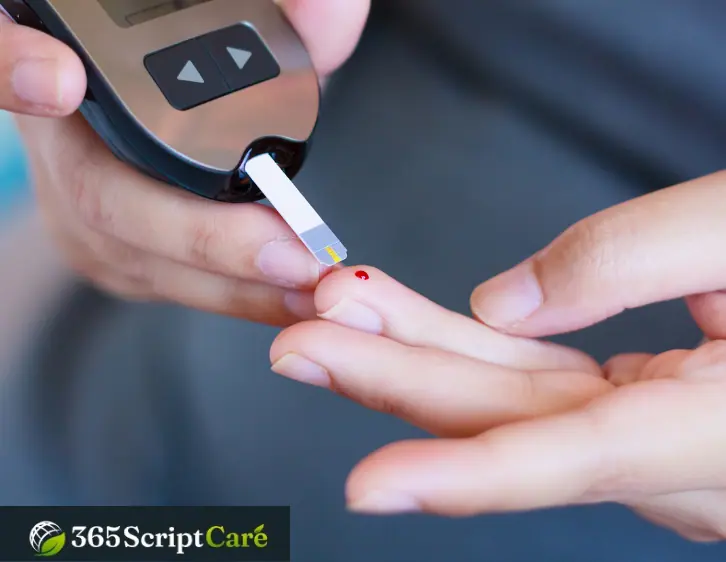 You might be exploring medications for type 2 diabetes or weight loss. You might have come across Mounjaro and Zepbound. Both medications contain tirzepatide. But, the FDA has approved them for different uses. Mounjaro treats type 2 diabetes. Zepbound aids in weight loss. Continue reading to discover the differences between Mounjaro and Zepbound. This includes their actions, side effects, and if they could be right for your health needs.
You might be exploring medications for type 2 diabetes or weight loss. You might have come across Mounjaro and Zepbound. Both medications contain tirzepatide. But, the FDA has approved them for different uses. Mounjaro treats type 2 diabetes. Zepbound aids in weight loss. Continue reading to discover the differences between Mounjaro and Zepbound. This includes their actions, side effects, and if they could be right for your health needs.
What is Mounjaro
Mounjaro marks a significant advancement as the inaugural GIP and GLP-1 receptor agonist, targeting both the glucose-dependent insulinotropic polypeptide (GIP) receptors and the glucagon-like peptide-1 (GLP-1) receptors.
Mounjaro reduces blood sugar. It does this by stimulating the pancreas to make more insulin. It also cuts the liver’s sugar output and slows digestion. This prolongs the feeling of fullness. This mechanism is enabled by the activation of the natural incretin hormones. They are GIP and GLP-1. These hormones are key in regulating blood sugar.
The FDA approved the Mounjaro injection on May 13, 2022. It is an add-on treatment to diet and exercise. It is for improving blood sugar control in adults with type 2 diabetes. But, people with type 1 diabetes should avoid taking Mounjaro. Its safety is still uncertain for those with a history of pancreatitis.
Benefits of Mounjaro
-
Mounjaro (Tirzepatide) offers strong glycemic control. It works by acting on GLP-1 and GIP receptors. This helps insulin release and suppresses glucagon release. This results in improved blood sugar levels.
-
Mounjaro promotes weight loss. It does this by curbing appetite and slowing digestion. This makes it great for people with diabetes who also struggle with obesity. It tackles both problems at once.
-
Dosage convenience is a key benefit. Mounjaro takes once a week. It improves treatment adherence and patient compliance compared to daily injections. This reduces the burden of therapy management and may improve long-term outcomes.
Side Effects
Mounjaro may lead to various side effects, with some being more frequent than others. These side effects are typically temporary, lasting from a few days to several weeks. However, if any side effects persist beyond this timeframe, cause significant discomfort, or worsen in severity, it’s essential to consult your doctor or pharmacist promptly.
Among the common side effects reported in clinical trials of Mounjaro, individuals often experienced:
-
Nausea
-
Diarrhea
-
Loss of appetite
-
Vomiting
-
Constipation
Additionally, other mild side effects have been observed with Mounjaro use. This list is not exhaustive, and for a comprehensive understanding, it’s advisable to refer to the prescribing information for Mounjaro. These mild side effects may include:
-
Indigestion
-
Abdominal pain
-
Belching
-
Flatulence
-
Acid reflux
-
Abdominal swelling
-
Mild discomfort at the injection site
-
Mild allergic reactions
Dosage Guideline
The dosage of Mounjaro depends on individual factors. These include the severity of the condition, other medications being taken, and health. Yet, Mounjaro is administered as a once-weekly injection. The starting dose of Mounjaro is usually lower to reduce the risk of side effects. It may be increased over time as tolerated. Providers will decide the right dosage. It will be based on the patient’s needs and response to treatment.
Administration Instructions
Administer Mounjaro subcutaneously by injecting it under the skin. The usual sites for administering the injection include the abdomen, thigh, or upper arm. Patients can self-administer Mounjaro injections after receiving proper training from their healthcare provider. It’s essential to rotate injection sites to prevent irritation or damage to the skin. Patients should follow the instructions from their healthcare provider. They are for proper injection technique and rotating sites.
Mounjaro Price and Coupon
The Mounjaro price can vary depending on factors such as dosage, location, and insurance coverage. Individuals seeking Mounjaro may explore options to make it more accessible and affordable. Online pharmacies like 365 Script Care are our partner. They may offer low prices for it. They also provide convenience and access for people who like to buy meds online. Additionally, people can use Mounjaro coupons. An example is the code “365MOUNJARO10OFF.” They save on the price when buying from 365 Script Care or other participating pharmacies. These coupons can help reduce out-of-pocket expenses and make Mounjaro more financially accessible for those in need.
What is ZepBound
The FDA approving Zepbound might lead to some unintended effects on public health. Many people in the US want weight loss pills, which creates chances for something called compounding. Compounding is when people mix or change the ingredients of a drug. This happened before with Ozempic, a drug the FDA said was okay for treating diabetes but was often given for weight loss even though that’s not what it was approved for. Some reports to the FDA said that people were mixing Ozempic in ways that might not be safe or work well. If more and more people want weight loss pills, we might see more mixed-up versions of different drugs.
How ZepBound Works
ZepBound works by targeting specific receptors in the body that help control blood sugar levels and appetite. It’s what we call a dual agonist, which means it activates two different receptors at once. These receptors are called the GIP receptor and the GLP-1 receptor. When ZepBound activates these receptors, it helps the body in a few different ways.
Initially, it triggers the pancreas to increase insulin secretion. Insulin is a hormone that helps lower blood sugar levels by moving sugar from the blood into cells where it can be used for energy. By increasing insulin production, ZepBound helps bring down high blood sugar levels.
Second, ZepBound slows down the rate at which food passes through the stomach and intestines. This can make you feel full for longer after eating, which can help with weight loss by reducing how much you eat.
ZepBound Benefits
The benefits of Zepbound stem from its unique mechanism of action and its ability to target multiple pathways involved in blood sugar control and weight management. Here are some key benefits of Zepbound:
-
It lowers blood sugar levels. It does this by telling the pancreas to release more insulin. Insulin is crucial for regulating blood sugar levels by facilitating the uptake of glucose from the blood into cells for energy production.
-
Weight loss slows digestion. It makes food move through the stomach and intestines slower. This leads to more fullness and less appetite. This effect can help weight loss. It does this by helping people eat fewer calories and manage their weight better.
-
Zepbound is a dual agonist. It acts on the GIP and GLP-1 receptors. It offers a complete approach to managing diabetes and losing weight. It targets both receptors at the same time. This addresses many aspects of metabolic dysfunction. Such dysfunction is linked to type 2 diabetes and obesity.
ZepBound Side Effects
Zepbound may induce certain side effects, with some being more frequently encountered than others. These effects are typically transient, persisting for a few days to weeks. However, if side effects last longer, cause much discomfort, or get worse, you should promptly consult your doctor or pharmacist.
Among the common side effects reported by individuals who participated in clinical trials with Zepbound, the following were frequently noted:
-
Digestive disturbances, including nausea, vomiting, diarrhea, or constipation
-
Indigestion
-
Fatigue
-
Abdominal pain
-
Injection site reactions
Zepbound may lead to mild side effects, though not all potential ones are listed here. For a comprehensive understanding, consult the drug’s prescribing information.
Reported mild side effects of Zepbound encompass:
-
Digestive discomfort like nausea, vomiting, diarrhea, or constipation
-
Abdominal pain
-
Gastroesophageal reflux disease (GERD)
-
Indigestion
-
Slight elevation in heart rate
-
Decreased blood pressure
-
Fatigue
-
Hair loss
-
Burping
-
Reaction at the injection site
-
Mild allergic response
These effects might be transient, lasting from a few days to weeks. Should they persist beyond this timeframe, cause significant inconvenience, or intensify, consult your healthcare provider or pharmacist.
Dosage Guidelines
Healthcare providers determine the dosage of ZepBound. They base it on many factors, such as the condition’s severity, patient traits, and treatment response. ZepBound is administered orally in the form of tablets. The recommended starting dose is often lower to minimize the risk of side effects, with adjustments made as needed. Providers will tailor the dosage to meet each patient’s specific needs. They will consider factors like age, weight, and kidney function. Patients must follow their provider’s instructions. These include the dosage and any changes made during treatment.
Administration Instructions
ZepBound tablets are taken orally with water, usually once daily. The tablets can be taken with or without food, although consistency in administration is recommended. Patients should swallow the tablets whole and not crush, chew, or split them unless advised otherwise by their healthcare provider. Patients need to adhere to the prescribed dosing schedule and not miss any doses. If a dose is missed, patients should take it as soon as they remember, unless it’s almost time for the next scheduled dose. In such cases, patients should skip the missed dose and resume their regular dosing schedule. Patients need to store ZepBound tablets in a cool, dry place away from moisture and heat, and to keep them out of reach of children.
ZepBound Price and Coupon
The ZepBound price can fluctuate based on factors like dosage, location, and insurance coverage. To help manage expenses, individuals may explore options such as coupons and discounts. Some drug companies offer patient assistance programs for ZepBound. These programs give discounts or financial help to eligible people. Additionally, online pharmacies and drug discount websites may offer competitive pricing for ZepBound, enabling individuals to compare prices and find cost-effective options.
Furthermore, individuals have the option to seek out ZepBound coupons from multiple channels, which can contribute to further cost savings by providing discounts on the product’s purchase price. These coupons, available through various sources, can offer discounts on the purchase price of ZepBound. Patients can search online for ZepBound coupons. They can also ask their healthcare providers or pharmacists about discounts.

Contrasting Approved Indications Between Zepbound And Mounjaro
When we look at what Zepbound and Mounjaro are approved for, we can see they’re meant for different things and people. Zepbound is mainly for helping with type 2 diabetes, while Mounjaro is for both diabetes and weight loss. So, their main goals and the people they’re meant to help are a bit different.
Zepbound is a new medicine mainly used to help manage type 2 diabetes. It was approved by the FDA because studies showed it can help control blood sugar levels in adults with type 2 diabetes. It works by targeting certain receptors in the body that help regulate glucose, providing a helpful option for people who have trouble controlling their blood sugar levels with lifestyle changes or other diabetes pills.
Meanwhile, Mounjaro is also a new medicine that the FDA approved. It’s a bit different from Zepbound because it’s not just for diabetes. Mounjaro can help with both controlling blood sugar levels and losing weight. Like Zepbound, it works by targeting certain receptors in the body. But Mounjaro’s approval covers not just diabetes but also weight loss. This makes it helpful for people with type 2 diabetes who also want to lose weight.
Wrapping Up
In the comparison between ZepBound and Mounjaro, it’s crucial to consider what each drug offers. We must also consider how it could affect type 2 diabetes treatment. ZepBound focuses mainly on controlling blood sugar levels, while Mounjaro does that and also helps with weight loss. Deciding between them involves thinking about factors. These include cost, side effects, and personal preference. Healthcare providers can guide patients. They do this by explaining the differences and involving them in decisions. By understanding these choices, people with type 2 diabetes can work with their healthcare team to find the treatment that’s best for them.





